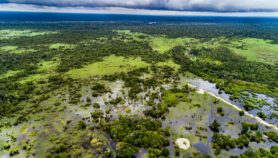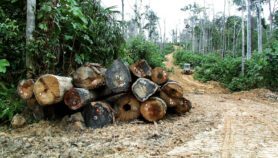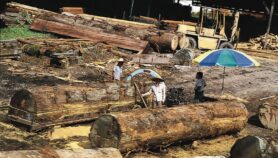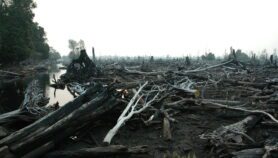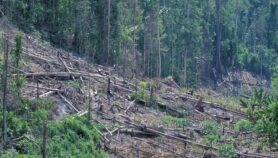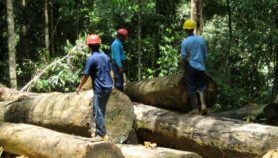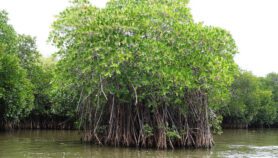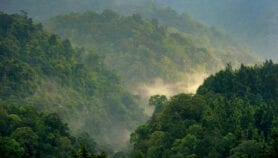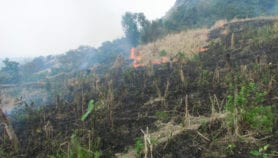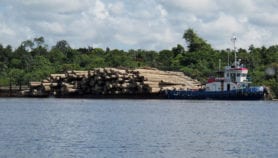09/01/20
Re-growing logged forests not all that sustainable
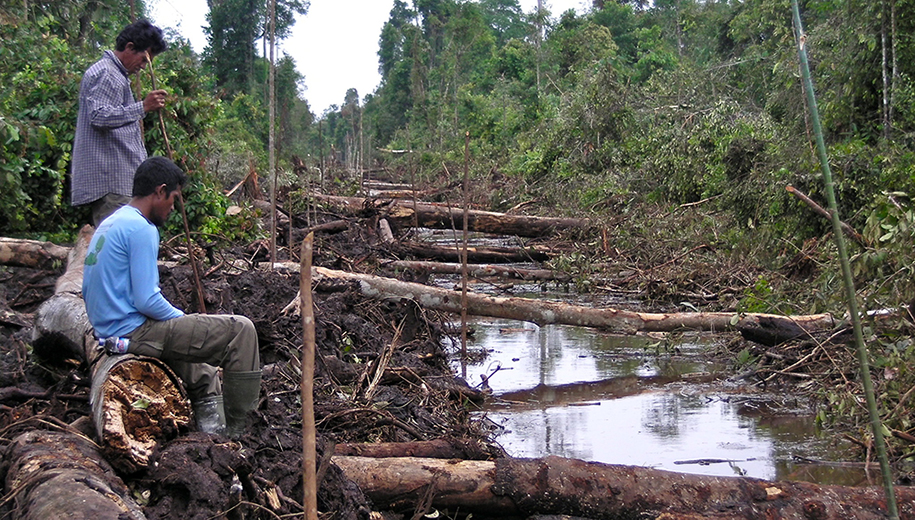
By: Claudia Caruana
Send to a friend
The details you provide on this page will not be used to send unsolicited email, and will not be sold to a 3rd party. See privacy policy.
[NEW YORK] Repeated logging can deplete the soil of phosphorus, nitrogen and other valuable soil nutrients and limit conditions for successful regrowth of forests, says a new study.
Re-growing forests, after logging operations, is a recognised strategy — under international initiatives such as Reducing Emissions from Deforestation and Forest Degradation (REDD+) and the Convention on Biological Diversity — to enhance biodiversity conservation and mitigate climate change.
“Many of these forests have been lost in the last 40 years, making way for plantations of oil palm in the lowlands, and most of the easily accessible forests have been logged”
David Coomes, University of Cambridge Conservation Research Institute
According to the study, published December in Global Change Biology, selective logging is being carried out across millions of hectares of forest in the tropics, resulting in degraded forests that are now more widespread than primary, old-growth forests.
David Coomes, director, University of Cambridge Conservation Research Institute and one of the study’s authors, says the results of the study suggest that each consecutive harvest reduces the level of nutrients in the system, and newly established trees have to adapt to conserve the scarce resources available to them.
Coomes says the researchers chose Borneo because it “harbours some of the most diverse tropical forests in the world, but many of these forests have been lost in the last 40 years, making way for plantations of oil palm in the lowlands, and most of the easily accessible forests have been logged”.
The researchers studied how leaf function changes in response to logging, created high-definition images of a forest landscape in north-eastern Borneo using LIDAR-guided imaging spectroscopy from an aircraft. They combined this information with nutrient measurements from 700 individual trees to map nutrient concentrations in tree leaves in an area containing repeatedly logged forest and old-growth forest.
The researchers said trees of recovering tropical forests were found to have tougher leaves, with lower concentrations of phosphorus and nitrogen — both essential for plant and tree growth. This suggests that multiple cycles of logging and recovery irreversibly remove phosphorus from the forest system and are pushing the nutrient content towards ecological limits, the researchers point out.
"Phosphorus limitation is a really serious global issue — it's one of the areas where humans are using a vital resource beyond sustainable levels,” Coomes stresses. “We found that differences from old growth forest become more pronounced as logged forests grow larger over time, suggesting exacerbated phosphorus limitation as forests recover.”
He adds: “We were interested in how logging had affected ecosystem services — the economic/society values that nature delivers which don't usually get included in economic valuation of land use.”
Coomes says the research does not imply that plantation forestry, or commercial forestry should be stopped. “Well-managed plantations focused on small parts of tropical landscapes may help protect our dwindling biodiversity. Any forestry needs to be ‘sustainable’ in the long term and removing hard-to-replace nutrients from natural ecosystems is clearly not sustainable.”
He believes future generations will regret the careless way in which their ancestors mismanaged tropical soils. “They will wonder why we allowed millions of tonnes of topsoil to be washed away when converting tropical forests into oil palm plantations, and why we were oblivious to the implications of removing trees from natural forests.”
Coomes says a total ban on logging mature tropical forest and restoration of degraded natural forests would benefit nature and help mitigate climate change because regenerating forests takes carbon out of the atmosphere and into wood. “Plantations are the alternative alongside a reduction in wood consumption through less wasteful use.”
Nonetheless, land-use change is known to damage soils, clog rivers get washed into the sea, says Coomes. “The loss of nutrients in timber is already recognised as important for yields in temperate boreal plantations, and managers add mineral nutrients to compensate for the loss.”
L. Roman Carrasco, an associate professor in the department of biological sciences, National University of Singapore, says the study “demonstrates how using air-borne hyperspectral imagery can offer new insights in phosphorus dynamics after logging. The notion that repeated logging is sustainable and that the forest can spring back to its original form is questioned by this and other recent studies.”This piece was produced by SciDev.Net’s Asia & Pacific desk.




